At SpeedX Marketing, we are a leading provider of innovative IT solutions tailored to meet your specific business needs. With years of expertise and a team of skilled professionals, we offer cutting-edge technology solutions that drive growth and efficiency.
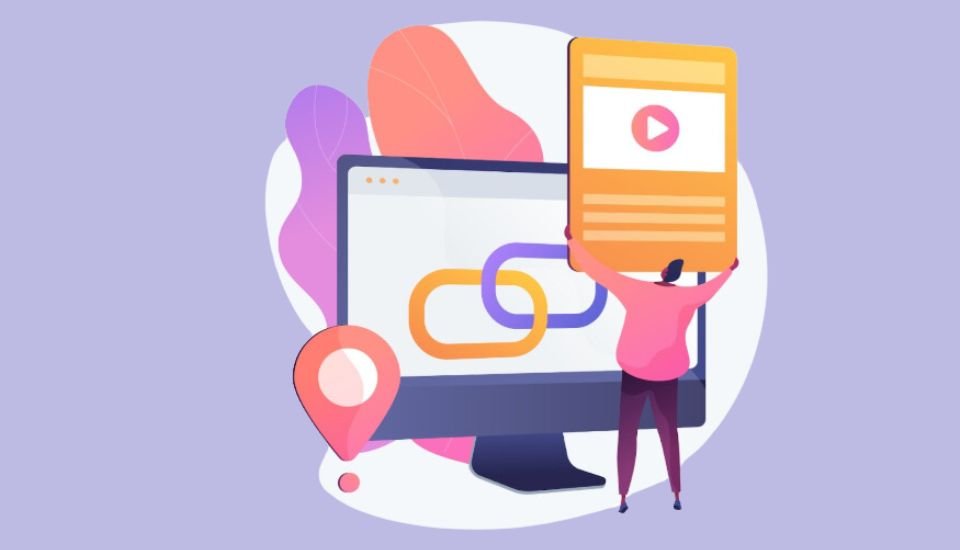
Backlinks play a crucial role in Search Engine Optimization (SEO), and when it comes to local SEO, they become even more significant. In local SEO, backlinks act as a signal to search engines, such as Google, indicating the relevance and authority of a local business within its specific area. These links from other local businesses, local directories, chambers of commerce, or community organizations help establish the local business’s credibility and enhance its visibility in local search results. By acquiring quality backlinks from local sources, businesses can improve their local search rankings and attract more customers from their target geographic region.
Local SEO backlinks are inbound links that originate from websites within the same local area as a business. These links are essential for enhancing a business’s visibility and search engine rankings in its specific geographical region.
Local SEO focuses on optimizing a website and its online presence for local searches. When local businesses receive backlinks from other local businesses, local directories, community organizations, or chambers of commerce, it signals to search engines that the business is relevant and authoritative within its local community.
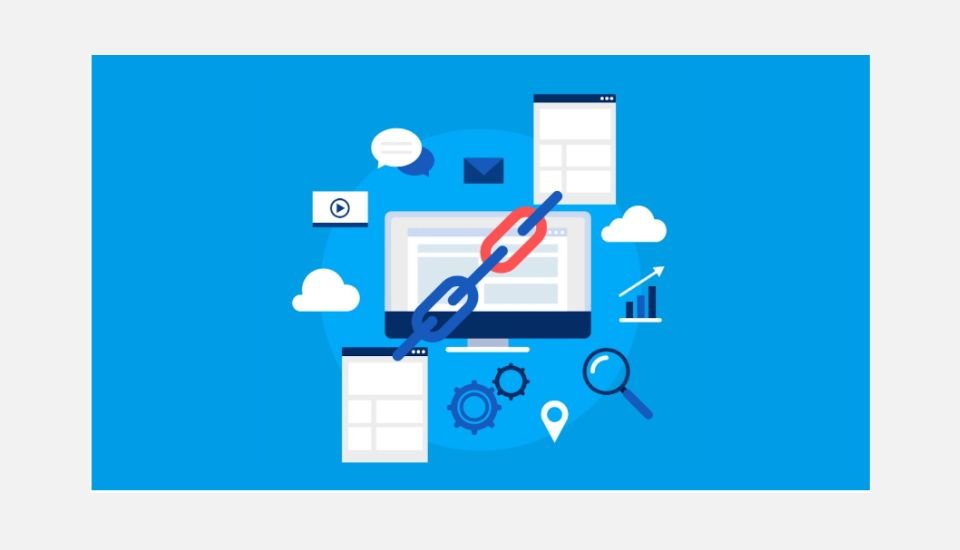
Competitor analysis and targeted link acquisition contribute to link generation for 54% of businesses. (Aira)
The importance of local SEO backlinks stems from several factors:
Local SEO backlinks are important as they establish a business’s relevance, authority, and trustworthiness within its local area. Backlinks from local sources can enhance a business’s visibility in local search results, drive traffic to the website, and contribute to overall business growth and success in the targeted geographic region.
Cracking the local SEO code can be tricky, but the payoff is huge – increased visibility and a surge in local customers. The coveted Map Pack results, those top three business listings displayed on Google Maps searches, are prime real estate. Here, we unveil 10 effective strategies you can leverage to dominate your local niche and claim your rightful place at the top of the Map Pack.
In the world of local SEO, backlinks are super important. Backlinks are like votes from other websites saying your site is good. But not all backlinks are equal – you need the right ones to show search engines that you’re a real local business that matters. This is where local directories come in.
Imagine local directories as online versions of the old phone books, but much cooler. These websites list businesses in a certain area, making it easy for people nearby to find you. But here’s the kicker: for business owners like you, these directories are like finding treasure for your website’s visibility.
There are lots of places online where you can put your business info without having to pay anything. This is great because it lets you share important stuff like your business name, where you’re located, your phone number, and your website. When you make sure all this info is the same on every site, it helps search engines figure out exactly where you are.
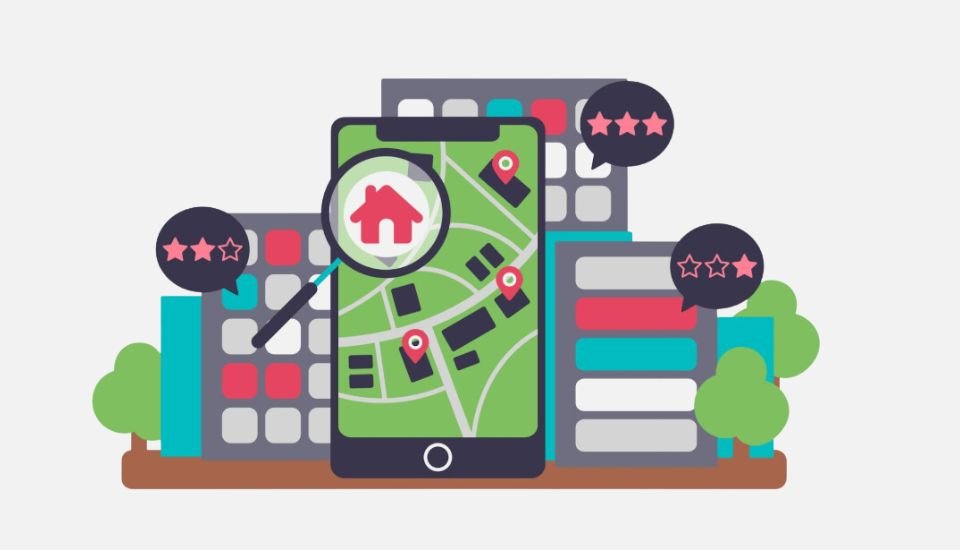
On average, businesses holding the #1 spot in Google local rankings possess 86 citations, while those at #10 typically have 75. (Brightlocal)
NAP + W might sound like a weird code, but it’s just short for Name, Address, Phone number, and Website. These are the key details about your business that you want to make sure are accurate and consistent everywhere online. When search engines see the same NAP + W info across different directories, it helps them trust that your business is real and where you say it is. This trust can lead to better rankings in search results, making it easier for customers to find you.
Once you’ve claimed your listing on these directories and filled in all the blanks, they usually give you a link back to your own website. This is super cool because it’s like getting a thumbs-up from a local directory, telling search engines that your business is legit. These links can also come in two flavors: do-follow or no-follow. Do-follow links are like gold because they can really boost your site’s ranking, while no-follow links still help, but not as much. Either way, having these links pointing back to your site can help improve your visibility online and attract more customers.
This section will delve into the significance of being listed on reputable directories and how harnessing their influence can yield valuable backlinks for local businesses.

Each month, the top-ranked page in search results receives an extra 5% to 14.5% increase in do follow backlinks from newly discovered websites. (Ahrefs)
Google Business Profile (formerly known as Google My Business) is a free tool provided by Google that allows businesses and organizations to manage their online presence across Google, including Search and Maps. By creating and verifying a Business Profile, businesses can connect with customers, post updates, and see how customers are interacting with their business on Google.
Local link building, which involves acquiring hyperlinks from local websites, significantly boosts search engine rankings for local searches. Google Business Profile (GMB) is crucial for this, as it has high authority and inherently links to your website. Statistics show that GMB enhances local SEO by increasing visibility in local search results and Google Maps, with a well-maintained profile appearing in the local 3-pack, attracting 44% of clicks. Additionally, 56% of local businesses report increased traffic from GMB, which fosters user engagement through reviews and posts, increasing trust and local links, while ensuring consistent NAPW (Name, Address, Phone number, and Website) information across the web, a key factor in local SEO.
Listing your business on Google Business Profile involves several steps:
Follow the instructions for the chosen verification method and enter the code in your Google Business Profile account.
By following these steps, you can create a comprehensive and attractive Google Business Profile, enhancing your local SEO efforts and making your business more discoverable to potential local customers.
Yelp is an online platform that connects people with local businesses. Founded in 2004, Yelp allows users to search for and review a wide range of local businesses, including restaurants, shops, bars, services, and more. The platform is particularly well-known for its restaurant reviews, but it covers a wide array of categories. Yelp aims to provide a comprehensive guide to local businesses, enabling users to make informed decisions based on the experiences and opinions of others. It also offers tools and services for business owners to engage with customers and manage their online presence.
Yelp is an excellent source for this due to its high domain authority, which boosts SEO; its credibility and trust among consumers; its local relevance that aids in geographic targeting; its ability to drive user engagement through reviews and ratings; its potential to enhance visibility by appearing in search engine results; and its rich media content options, including photos and detailed descriptions, that make listings more engaging and informative.
Here’s a step-by-step guide:
By following these steps and maintaining an active presence on Yelp, businesses can effectively leverage the platform for local link building and improve their visibility and credibility among local customers.
Bing Places for Business is a free online local listing service provided by Microsoft that helps businesses to get found on Bing’s search engine and Bing Maps. This platform allows businesses to create and manage their listings, ensuring accurate and up-to-date information such as business name, address, phone number, website, and hours of operation.
Local backlinks are key to local SEO success, and Bing Places offers a powerful solution. Listing your business increases local visibility in Bing searches, attracting nearby customers. Trusted by search engines, Bing Places listings enhance your website’s authority and provide a valuable backlink. Consistent citations across directories like Bing Places further strengthen your local SEO presence. A well-crafted listing with positive reviews can even lead to natural backlinks from local media, building your online reputation. Finally, Bing Places facilitates local engagement, allowing you to connect directly with your community.
To effectively list your business on Bing Places, follow these detailed steps:
By following these comprehensive steps, you can successfully list your business on Bing Places, thereby enhancing its online visibility and attracting more customers.
Apple Maps is a mapping service developed by Apple Inc. It is designed to provide users with detailed maps, directions, and location-based information on Apple devices such as iPhones, iPads, and Mac computers. Similar to other mapping services like Google Maps, Apple Maps offers features such as turn-by-turn navigation, real-time traffic updates, public transit information, and points of interest.
Apple Maps serves as an effective local link building tool for businesses. By listing your business on this widely used and trusted platform, you enhance visibility to potential customers who use Apple devices. This increased exposure can lead to more foot traffic and online inquiries. Additionally, being listed on Apple Maps positively impacts search engine rankings, instills credibility, and provides access to features like reviews and business descriptions, which help attract customers and differentiate your business from competitors.
To list your business on Apple Maps, follow these steps:
By listing your business on Apple Maps and optimizing your listing, you can improve your online visibility, attract more customers, and enhance your local link building efforts.
Facebook, primarily known as a social media platform, has evolved significantly to include features that make it a powerful tool for businesses, particularly local ones. One such feature is the ability to create and manage business pages, which serve as local listing directories. These pages allow businesses to reach out to potential customers in their vicinity, providing essential information like address, contact details, business hours, services, and customer reviews.
With over 2.9 billion monthly active users as of 2023, Facebook is one of the most trafficked websites globally, offering businesses access to a vast and diverse audience. Its sophisticated algorithms and targeted advertising options enable businesses to effectively reach and engage their local audience, driving high-quality, local traffic to their pages.
Facebook is an excellent source for local link building due to its high domain authority, which enhances SEO value for linked businesses. It promotes engagement through posts, comments, and messages, fostering trust and visibility. The platform’s advanced targeting options ensure efficient local customer reach, while user-shared content amplifies local visibility. Additionally, customer reviews on business pages boost online reputation and influence potential customers.
Creating a business listing on Facebook is a straightforward process. Here’s a step-by-step guide:
Facebook’s role as a local listing directory is reinforced by its vast user base, advanced targeting options, and interactive platform. It serves as a potent tool for local link building, enhancing both visibility and SEO. By creating a well-optimized business page and actively engaging with the local community, businesses can leverage Facebook to drive local traffic, build strong customer relationships, and improve their online presence.
Imagine you’re a plumber. General directories are great, but wouldn’t it be amazing to be listed in a directory specifically for plumbers in your city? These niche sites attract highly targeted traffic, converting lookers into paying customers.
So, the next time you’re thinking about local SEO backlinks, don’t underestimate the power of niche specific local directories. With a strategic mix of general and niche listings, you’ll be building a strong backlink profile that screams “local authority” to search engines, ultimately landing you right where you want to be – at the top of local search results.
Listing businesses on niche-specific directories is beneficial because these platforms attract highly targeted audiences actively seeking specialized services or products, thereby enhancing visibility, credibility, and SEO rankings for businesses. Additionally, being featured in such directories often implies a level of expertise and trustworthiness in the industry. Examples of niche-specific directories include TripAdvisor for travel and hospitality, Houzz for home improvement and interior design, and Avvo for legal services.
Guest blogging for local link building is a strategic method to enhance your website’s search engine optimization (SEO) by acquiring backlinks from local websites. This technique not only improves your site’s authority but also increases your visibility within the local community. Here’s a step-by-step guide on how to effectively engage in guest blogging for local link building and how to identify potential sites by analyzing competitors.

The best tip for local SEO guest blogging is to focus on contributing valuable content to local publications or websites within your niche to enhance your visibility and credibility within the community.
Before starting, it is crucial to identify and clarify your objectives: aim to increase local visibility, enhance local SEO, build relationships with local businesses and influencers, and drive targeted local traffic to your site. By focusing on these goals, you can develop a more effective and strategic approach to your local marketing efforts, ensuring that your actions align with your desired outcomes and contribute to the growth and success of your business in the local community.
To effectively research local blogs and websites that accept guest posts, start by conducting a thorough Google search using queries such as “CityName blog,” “CityName guest post,” or “CityName write for us.” This approach will help you identify relevant platforms within your area. Additionally, explore local business directories and community listings to find potential opportunities. Don’t overlook the power of social media; platforms like Facebook, Twitter, and LinkedIn can also help you discover local blogs and websites by joining community groups, following local influencers, and engaging in discussions. By combining these methods, you can compile a comprehensive list of local blogs and websites to target for guest posting.
To analyze competitor backlinks effectively, start by using SEO tools such as Ahrefs, Moz, or SEMrush to examine the backlink profiles of your competitors and identify local websites that link to them. Additionally, employ Google search operators like `link:competitorwebsite.com` to find pages that link to your competitors’ sites. Regularly monitor the content published by your competitors, including their blogs and guest posts, to understand where they are guest blogging and gaining backlinks. This comprehensive approach will help you uncover valuable backlink opportunities and enhance your own link-building strategy.
When assessing potential guest blogging sites, it’s important to evaluate them thoroughly to ensure they are worthwhile. Begin by using tools like Moz’s Domain Authority or Ahrefs’ Domain Rating to measure the site’s authority. Ensure the site is relevant to your industry or locality to maximize the impact of your guest posts. Additionally, gauge audience engagement by examining the number of comments, social shares, and the frequency of updates on the site. This comprehensive evaluation will help you select high-quality sites that can effectively boost your online presence and authority.
When creating a pitch to site owners or editors, it’s essential to craft a compelling message that resonates with them. Personalize your email by addressing the recipient by name and mentioning specific content from their site that you admire, demonstrating your genuine interest and attention to detail. Propose topic ideas that are relevant and engaging, tailored to their audience’s interests and needs. Highlight the value you can offer by explaining how your guest post will benefit their readers with unique insights or perspectives. Clearly articulate why collaborating with you would be advantageous, emphasizing the expertise and value you bring to the table. By following these steps, you can increase the likelihood of securing guest blogging opportunities and building fruitful relationships with site owners and editors.
After securing approval for your pitch, shift your attention towards crafting high-quality content that adds value to the target audience. Start by conducting thorough research to ensure your content is well-informed and provides valuable insights. Incorporate local references and data to make the content more relevant and relatable to the audience, enhancing engagement and resonance. Utilize SEO optimization techniques by naturally integrating local keywords throughout the content and ensuring it is structured in a way that is search engine-friendly, maximizing its visibility and reach. By focusing on these aspects, you can create compelling content that not only resonates with the audience but also drives traffic and contributes to your overall marketing goals.
When crafting your content, integrate backlinks to your website seamlessly and naturally. Utilize contextual links by embedding them within relevant information, ensuring they add value to the reader’s understanding and flow of the content. Additionally, if permitted, include a link to your website in the author bio, providing readers with an opportunity to learn more about you and your expertise. By incorporating natural backlinks in this manner, you not only enhance the credibility and authority of your content but also drive traffic to your website, ultimately supporting your broader marketing objectives.
When crafting your content, integrate backlinks to your website seamlessly and naturally. Utilize contextual links by embedding them within relevant information, ensuring they add value to the reader’s understanding and flow of the content. Additionally, if permitted, include a link to your website in the author bio, providing readers with an opportunity to learn more about you and your expertise. By incorporating natural backlinks in this manner, you not only enhance the credibility and authority of your content but also drive traffic to your website, ultimately supporting your broader marketing objectives.
Guest blogging for local link building involves a combination of strategic research, quality content creation, and effective outreach. By identifying local sites through competitor analysis and leveraging local blogs and community websites, you can build valuable backlinks that boost your local SEO and enhance your online presence.
Expanding your business’s reach in the entertainment or travel sector involves strategic partnerships with local tourist boards and travel websites. These collaborations are invaluable, as they often feature and recommend local establishments like restaurants, bars, hotels, and attractions to visitors exploring the city. Not only does this drive significant traffic to your business, but it also secures high-quality backlinks from reputable sources.
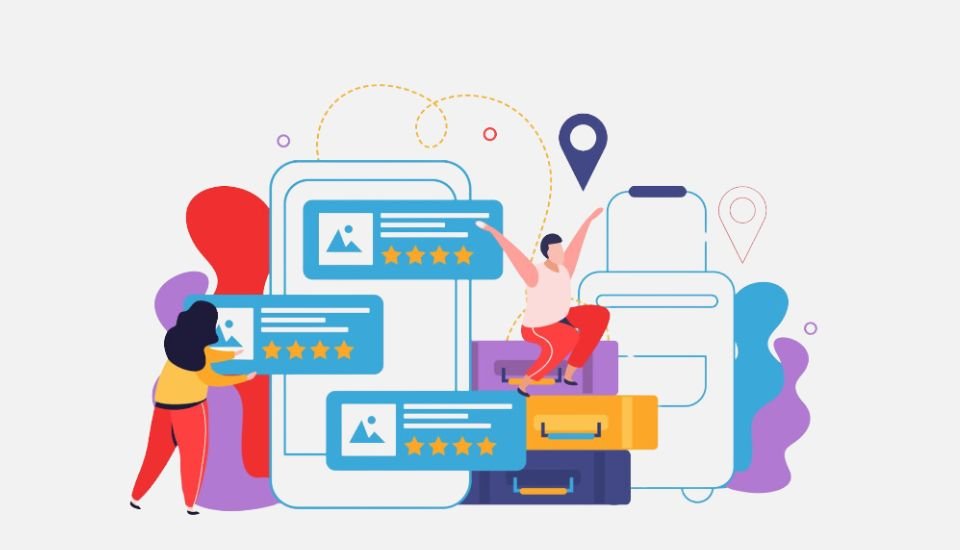
Ensure your business listing on tourism directory websites for travel and hotel businesses includes vivid imagery and compelling descriptions to captivate potential customers.
Partnering with local tourism entities isn’t just about expanding your reach—it’s about strategically positioning your business in front of a highly engaged audience and building credibility in the eyes of potential customers. Let’s delve into why forming alliances with tourist boards and travel websites is essential for businesses in the entertainment and travel sectors, and explore how these partnerships can also yield valuable backlinks.
Tourist boards and travel websites serve as go-to resources for travelers seeking recommendations on places to visit and activities to experience in a city. By securing a spot on these platforms, your business gains access to an extensive audience actively looking for local attractions and services. This exposure can significantly elevate your business’s visibility, attracting more attention from potential customers.
Aligning with tourism entities allows you to tap into a highly targeted audience of travelers who are already interested in exploring your city. These individuals are actively seeking experiences and services similar to what your business offers. By positioning yourself on platforms they trust, you increase the likelihood of converting website visitors into paying customers. This targeted approach ensures that your marketing efforts are directed towards those most likely to engage with your business.
Recommendations from reputable sources like tourist boards and established travel websites carry significant weight with potential customers. Being featured on these platforms enhances your business’s credibility and trustworthiness, establishing you as a reputable destination for travelers. This heightened level of trust can lead to higher conversion rates and foster repeat business, as satisfied customers are more likely to return and recommend your business to others.
Partnering with local tourism entities is a strategic move for businesses looking to expand their reach, increase visibility, and build credibility within their industry. These partnerships not only offer exposure to a highly engaged audience but also provide opportunities to secure valuable backlinks from reputable sources. Here’s a detailed guide on how to partner with local tourism entities and leverage these collaborations to obtain backlinks:
Keep the lines of communication open with your tourism partners and remain responsive to their inquiries or requests. Regularly check in to provide updates on collaborative efforts or offer additional support.
Show appreciation for any opportunities or support provided by the tourism entity. Expressing gratitude helps nurture positive relationships and encourages future collaboration.
Once backlinks are secured, monitor their placement and performance using tools like Google Analytics or SEO monitoring software. Track the impact of these backlinks on website traffic, search engine rankings, and overall online visibility.
By following these steps and leveraging strategic partnerships with local tourism entities, businesses can establish valuable collaborations that not only enhance visibility and credibility but also secure valuable backlinks to boost SEO and online authority.
Contacting local publishers or media platforms is an excellent strategy for local link building. These platforms often have a strong presence in the community and can provide valuable backlinks that enhance your local SEO efforts.

Highlighting compelling case studies or success stories that showcase the positive impact your business has had on the local community can further enhance your media appeal, illustrating your contributions and achievements in a relatable and inspiring manner.
Here’s a detailed guide on how to approach and engage with local publishers or media platforms to acquire local backlinks:
To effectively engage with local publishers or media platforms, it’s crucial to thoroughly research their content and audience. Begin by analyzing the types of content these platforms typically publish, delving into articles, features, and themes to pinpoint topics that align with your business or industry. This understanding allows you to craft pitches that resonate with their editorial focus, increasing the likelihood of acceptance. Additionally, delve into the demographics of their audience to tailor your pitch effectively. By grasping the age, gender, interests, and preferences of their readership, you can customize your messaging and content proposals to better appeal to their specific interests and needs, fostering stronger connections and increasing the likelihood of publication
To engage local media effectively, consider offering exclusive content or unique story ideas that highlight the distinctive aspects of your business. For instance, you could arrange exclusive interviews or provide a behind-the-scenes look at your operations, offering insights that are not available elsewhere. Additionally, sharing detailed information about upcoming local events, special promotions, or community initiatives that your business is involved in can generate interest and demonstrate your commitment to the area.
To ensure your visual content stands out and effectively communicates your message, it is essential to provide high-quality visual assets. This includes using professional photography to capture high-resolution images of your products, services, or establishment, which convey professionalism and attention to detail. Additionally, incorporating infographics or videos can significantly enhance your storytelling by providing visually engaging and informative content that captures the audience’s attention and complements your narrative. These visual elements not only add aesthetic value but also help in making complex information more accessible and interesting to your viewers.
To effectively manage and appreciate media coverage, consistently monitor any mentions of your business in publications. When your business is featured, promptly express gratitude by reaching out to thank the publisher or editor. Additionally, share the coverage with your audience to maximize its impact.
To effectively measure the impact of your backlinking efforts and refine your strategies, begin by using tools such as Google Analytics or specialized SEO software to meticulously track the influence of backlinks on your website’s traffic and search engine rankings. By closely monitoring these metrics, you can gain valuable insights into how backlinks are contributing to your overall online visibility and performance. Once you have collected sufficient data, evaluate the results to determine the success of your outreach initiatives. This assessment will help you identify which strategies are working and which need adjustments, allowing you to refine your approach for better outcomes in future campaigns.
Engaging with local publishers or media platforms can yield valuable backlinks that boost your local SEO and enhance your visibility within the community. By crafting compelling pitches, offering exclusive content, and building relationships with publishers, you can establish your business as a trusted and authoritative presence in the local media landscape.
Alumni pages are sections of a school’s or university’s website dedicated to former students, or alumni. These pages typically contain information about alumni activities, events, news, and networking opportunities. They often include directories or listings where alumni can share their current professional information, which helps them stay connected with the institution and fellow graduates. Alumni pages are valuable for networking and maintaining relationships with the school community, providing opportunities for career growth, and sharing personal and professional achievements.

Leveraging alumni pages for local link building involves a strategic approach to connect your business with educational institutions you have attended. Here’s a detailed guide on how to do it:
Begin by exploring your alma mater’s website, focusing on sections dedicated to alumni, such as directories, business networks, or specific alumni groups. These resources often provide opportunities to reconnect with former classmates, network with fellow alumni, and stay informed about upcoming events and initiatives. If you didn’t attend a local school, expand your search to include nearby colleges or universities that boast active alumni networks. Engaging with these institutions can be beneficial, as many offer inclusive alumni activities through professional associations or local business groups.
To understand the submission guidelines for listing a business on an alumni page, begin by thoroughly reviewing the specific requirements outlined by each alumni network, as they can vary. Common prerequisites include being a verified alumnus, ensuring your business is legitimate, and occasionally, the payment of a small fee or a suggested donation. Once you have a clear understanding of these requirements, gather all necessary information to facilitate a smooth submission process. This usually involves preparing your business name, contact details, website URL, a concise description of your products or services, and a brief explanation of your connection to the institution. Ensuring you have all these details at hand will streamline the application process and enhance your chances of successfully listing your business in the alumni directory.
To create a compelling listing, start with a professional description that is clear and engaging, emphasizing what distinguishes your business and highlighting any special offers available to fellow alumni. If permitted, enhance your listing with visual elements such as your business logo or relevant images to make it more attractive and visually appealing.
To submit your business, follow the specified submission process, whether it involves completing an online form, sending an email, or contacting a particular department, ensuring all information provided is accurate and complete. Engage with the alumni office if you have any questions or need guidance, as building a relationship with them can be advantageous for future opportunities. To promote your involvement, update your network by sharing your alumni listing on your business’s social media profiles and website, enhancing your credibility and demonstrating your active participation in the community. Additionally, participate in alumni events, such as networking gatherings, webinars, or reunions, to build relationships and potentially gain more backlinks and referrals.
By following these steps, you can effectively use alumni pages to enhance your local link-building strategy, boost your business’s online presence, and deepen your connections within the alumni community.
Local influencers and bloggers can significantly contribute to your local SEO link-building strategy by leveraging their influence and audience.
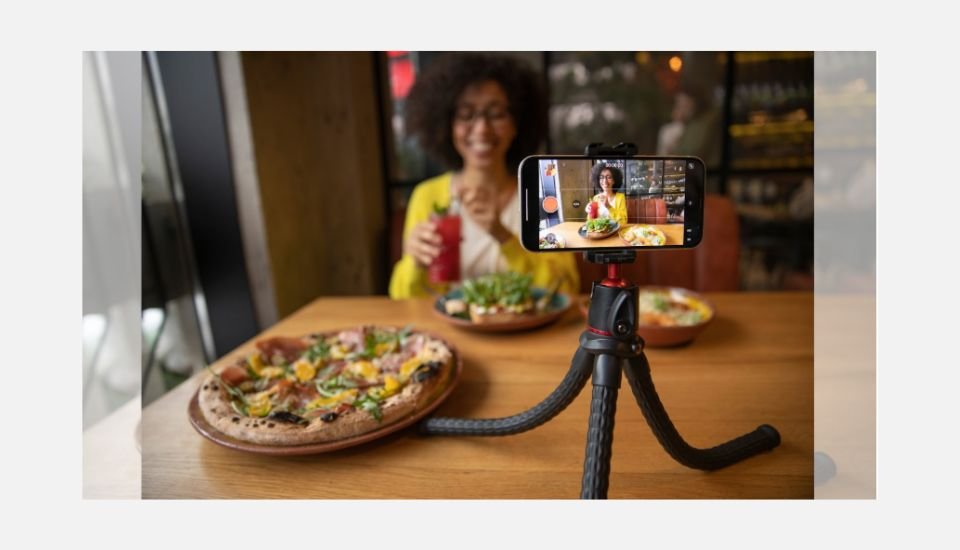
Encourage influencers to showcase your business’s unique selling points, such as expert advice or exclusive offers, to attract their followers effectively.
Here’s how local influencers and bloggers can play a crucial role in your local SEO link building strategy:
Local influencers and bloggers often have a dedicated following within your target geographic area. By collaborating with them, you gain access to their audience, which consists of local residents, potential customers, and fellow businesses. When these influencers or bloggers mention your business and link to your website in their content, it not only drives traffic but also sends positive signals to search engines about your local relevance.
Influencers and bloggers are trusted voices within their communities. When they endorse your business or recommend your products/services, it adds credibility and trustworthiness to your brand. Backlinks from such authentic recommendations carry significant weight in search engine algorithms, helping to improve your website’s ranking for local search queries.
In addition to direct backlinks, mentions of your business name, address, and phone number (NAP) by local influencers and bloggers act as valuable local citations. Search engines consider consistent NAP information across the web as a strong signal of business legitimacy and relevance. Therefore, earning mentions from local influencers can enhance your local SEO efforts by reinforcing your business’s presence in local search results.
Collaborating with local influencers and bloggers opens doors to creating compelling, locally-focused content. Whether it’s guest blog posts, sponsored content, or joint promotional campaigns, working together allows you to create engaging material that resonates with your local audience. By incorporating relevant keywords and backlinks to your website within this content, you can strengthen your local SEO strategy while providing valuable insights and information to your community.
Influencers and bloggers often have active social media channels where they engage with their audience regularly. When they share content featuring your business or products, it generates social proof and encourages audience engagement. This social activity not only drives traffic to your website but also signals to search engines that your business is relevant and popular within the local community.
By strategically partnering with them and cultivating meaningful relationships, you can enhance your website’s visibility and authority in local search results, ultimately driving more traffic and customers to your business.
Sponsoring local events presents a valuable opportunity for effective link building, contributing to your overall SEO strategy.

Discover local events effortlessly with Google search! Explore exciting opportunities to participate and engage with businesses in your area.
Here’s how sponsoring local events can be a significant source of good link building:
When you sponsor a local event, organizers often list sponsors on their event websites or promotional materials. These listings typically include links to the sponsors’ websites, providing valuable backlinks that can enhance your site’s SEO. Moreover, event organizers may promote sponsors through social media posts, email newsletters, and other digital channels, further amplifying your online visibility.
Sponsoring local events can attract media attention, resulting in event coverage by local newspapers, online publications, and blogs. Journalists and bloggers may write articles or press releases about the event, mentioning sponsors and linking to their websites. These earned media placements generate authoritative backlinks, boosting your website’s credibility and improving its search engine rankings.
Collaborating with event organizers on promotional campaigns or content initiatives can lead to mutual linking opportunities. For instance, you could create co-branded content, such as blog posts, videos, or infographics, related to the event or its theme. Both parties can then share this content on their respective platforms, including links to each other’s websites, thereby expanding their link profiles and reaching broader audiences.
After the event concludes, organizers often publish recap or thank-you posts on their websites or social media channels. These posts may highlight sponsors’ contributions and include links to their websites as a gesture of appreciation. By sponsoring local events, you can secure mentions and backlinks from reputable sources, reinforcing your website’s authority and relevance in the eyes of search engines.
When it comes to boosting your local SEO, backlinks are invaluable. They signal to search engines that your website is authoritative and relevant, helping to improve your search engine rankings. One often overlooked but highly effective strategy for building local SEO backlinks is to claim unlinked mentions. This method involves finding instances where your business, brand, or content is mentioned online without a corresponding link to your website and then requesting that the mention be linked. Here’s a detailed guide on how to effectively claim unlinked mentions.

SEMrush or Ahrefs SEO tools have specific features for tracking brand mentions and can help you identify unlinked mentions.
Unlinked mentions are valuable for several reasons:
The first step is to find where your business is mentioned without a link. This can be done using various tools and techniques:
Not all mentions are created equal. Before reaching out, verify that the mention is relevant and comes from a reputable source. A mention on a high-authority site or a local news outlet is more valuable than one on a low-quality blog.
Once you have identified a valuable unlinked mention, the next step is to find the contact information of the webmaster or content creator. Look for a contact page, author bio, or social media profiles to gather this information.
When reaching out to claim unlinked mentions, your communication should be concise, polite, and direct. Ensure your email is personalized, addressing the recipient by name, mentioning the article title, and expressing genuine appreciation for the mention. Highlight how linking to your website can benefit their readers by providing additional resources or information.
If you don’t receive a response within a week or two, send a polite follow-up email. This reminder can be crucial as initial emails may get lost or overlooked.
Claiming unlinked mentions is a straightforward yet powerful tactic for acquiring high-quality backlinks that can significantly boost your local SEO. By regularly monitoring mentions of your business, reaching out to site owners, and converting those mentions into links, you can enhance your website’s authority, improve search engine rankings, and drive more local traffic to your business. Start leveraging this strategy today to stay ahead of the competition and strengthen your online presence.
Internal linking is a crucial yet often underappreciated aspect of SEO, particularly in the context of local SEO. By effectively utilizing internal links, you can significantly enhance the search engine optimization of your website, driving more local traffic and improving your site’s authority. Here’s an in-depth look at the importance of internal links, why you should use them, and how to implement them effectively.
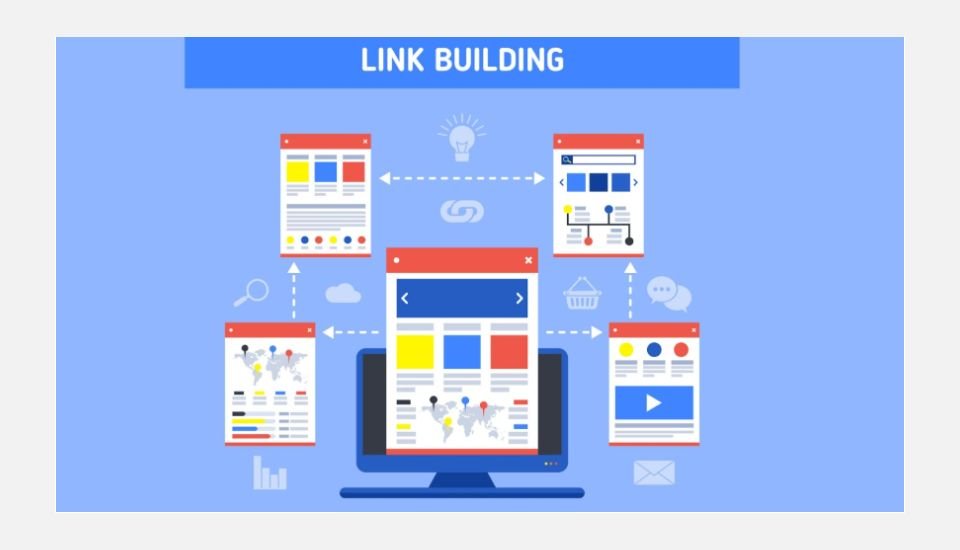
By guiding users to related content, internal links can reduce bounce rates and increase the time visitors spend on your site, which are positive signals for search engines.
Internal links are hyperlinks that point from one page on your website to another page on the same website. These links are essential for several reasons:
For local SEO, internal links play a particularly pivotal role:
Implementing an effective internal linking strategy involves careful planning and execution. Here are some steps to help you get started:
For example, if you are linking to a page about “Local Plumbing Services in Austin,” use that phrase as the anchor text rather than a generic “click here.”
Continuously monitor the performance of your internal links using analytics tools. Look at metrics such as user engagement, bounce rates, and time on site to gauge the effectiveness of your linking strategy.
Adjust your internal links based on performance data to ensure they are contributing to your local SEO goals.
Although participation in local forums is not as common or popular as it once was, it can still be a fruitful strategy for gaining backlinks and enhancing your online presence. Local forums are online communities where members discuss topics relevant to a specific geographic area or interest group. By actively engaging in these discussions, you can build relationships, share your expertise, and subtly promote your business.
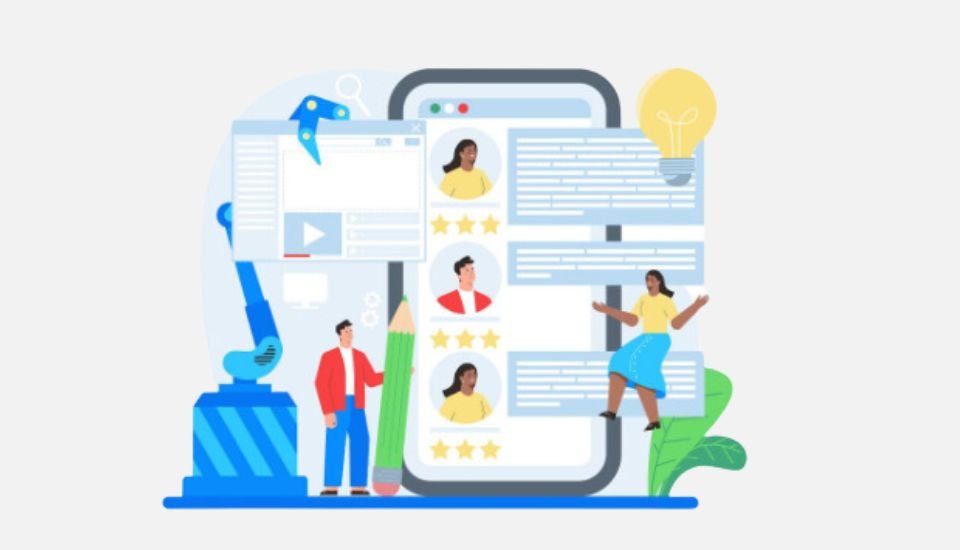
Regular contributions to forum discussions can position you as an authority in your field, increasing the likelihood that forum members will visit your website for more information.
To effectively engage and promote your business, start by searching for active local forums relevant to your industry or location using targeted keywords. Evaluate the forums based on discussion quality, active user count, and moderation standards to ensure reputability. Look for forums with a user base that matches your target audience to maximize interaction and business opportunities. Check for user feedback to confirm the forum’s respectability within your industry or community. Thorough vetting helps identify suitable platforms for effective business promotion.
After identifying suitable forums, the next step is to register and create a comprehensive profile. This profile should include detailed information about your business, such as your company’s name, a brief description of your services or products, and a link to your website. A well-crafted profile ensures that forum members can easily find out more about your business, which can drive traffic to your website and increase brand awareness. Additionally, an informative profile establishes credibility and helps you build trust with the forum community, making your engagement more effective.
When participating in forum discussions, focus on contributing valuable insights and information that can genuinely help other members. This includes answering questions thoughtfully, sharing relevant and useful resources, and offering your expertise on topics within your industry. It’s important to avoid overt self-promotion, as pushing your products or services too aggressively can be perceived as spam. This approach not only fosters trust and builds your reputation within the community but also encourages more organic and beneficial interactions, leading to potential business opportunities.
Including backlinks naturally means integrating links to your website in forum posts in a way that feels relevant and helpful to the discussion. Instead of forcefully inserting links, you should aim to provide value to other forum members by linking to relevant content such as blog posts, product pages, or additional resources that expand on the topic being discussed. This strategy not only helps drive traffic to your website but also enhances your credibility and authority within the forum community. However, it’s essential to ensure that the backlinks you include genuinely contribute to the conversation and provide valuable information to other users.
While local forums may not be as widely used as they once were, they remain a viable and effective method for building backlinks and enhancing your business’s online presence. By engaging with a targeted audience, establishing your authority, and being a valued community member, you can reap the benefits of this often-overlooked strategy.
Local SEO backlinks are a pivotal component of an effective digital marketing strategy for businesses aiming to enhance their local presence. These backlinks serve as endorsements from local websites, which can significantly boost a business’s credibility, trustworthiness, and relevance in the eyes of both search engines and potential customers. By providing valuable “link juice,” they help improve search engine rankings, making it easier for local customers to find the business online. Moreover, local SEO backlinks often include key information such as the business’s name, address, and phone number (NAP), which reinforces citation consistency across the web and further strengthens local SEO efforts. The resulting increase in referral traffic not only drives more visitors to the business’s website but also opens up opportunities for meaningful connections within the local community. In essence, investing in local SEO backlinks is a strategic move that enhances a business’s online footprint, builds trust, and fosters growth through greater visibility and community engagement.

